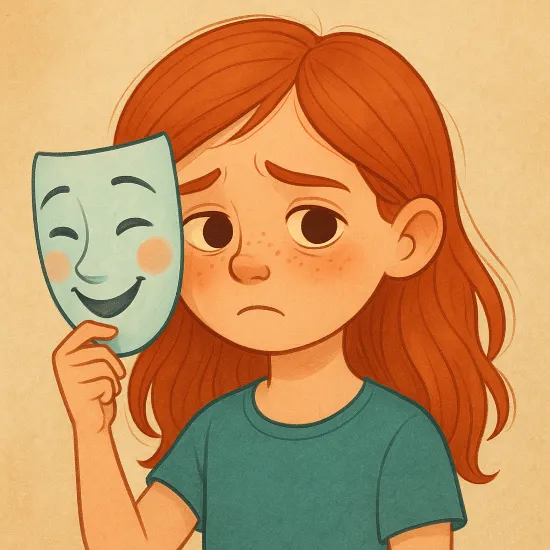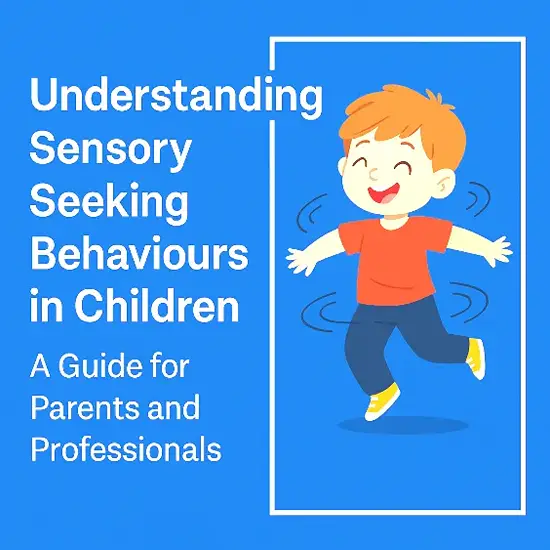Introduction to ADHD
Attention Deficit Hyperactivity Disorder (ADHD) is a neurodevelopmental condition that affects a child’s ability to focus, control impulses, and manage hyperactive behaviour. ADHD can be diagnosed in both children and adults and is one of the most common mental health conditions among children (American Psychiatric Association, 2013).
The National Institute for Health and Care Excellence (NICE) estimates that around 5% of children worldwide are affected by ADHD. It is essential to know that this figure varies across countries, whereas in the UK, for example, NICE estimates that this is much lower at 1-2% due to stricter criteria (NICE, 2018).
ADHD is more commonly diagnosed in boys; however, it is thought that ADHD is just as common in girls. Researchers have explored diagnosis rates with findings suggesting that girls with ADHD are more likely to display inattentive symptoms rather than hyperactive or impulsive symptoms, which historically has resulted in girls with ADHD going unrecognised (Hinshaw & Blachman, 2005).
Traits of ADHD
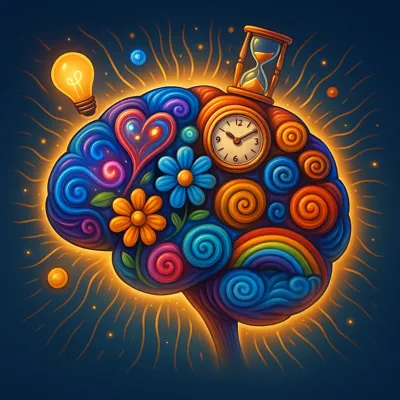
ADHD symptoms are generally classified into three categories: Inattention, Hyperactivity, and Impulsivity, with each manifesting in specific ways (DSM-5; American Psychiatric Association, 2013).
| Hyperactivity | Inattention | Impulsivity |
|---|---|---|
| A child who displays excessive fidgeting or tapping of hands or feet. | A child who finds it difficult to sustain attention when completing tasks. | A child who acts without thinking about consequences. |
| A child who struggles to remain seated for long periods. | A child who makes frequent mistakes due to overlooking details. | A child who interrupts the activities of others. |
| A child who feels restless. | A child who struggles with organisation or task completion. | A child who finds it hard to wait their turn in games. |
| A child who talks or interrupts others frequently. | A child who is easily distracted or forgets information during daily activities. |
Types of ADHD
There are three main types of ADHD, and they are as follows.
- Predominantly Inattentive Presentation (might be referred to as ADD): Struggles mainly with attention and focus.
- Predominantly Hyperactive-Impulsive Presentation: Challenges primarily with hyperactivity and impulsive behaviours.
- Combined Presentation: A mix of both inattentive and hyperactive-impulsive symptoms.
ADHD Diagnosis Criteria
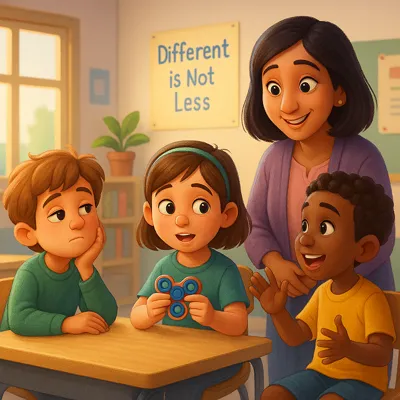
ADHD diagnosis involves evaluating behaviours across multiple settings adhering to NICE guidelines and diagnostic tools like the DSM-5. Structured interviews, rating scales (e.g., Conner’s Rating Scale, Strength and Difficulties Questionnaire), and developmental histories form the backbone of the assessment (NICE, 2018). The diagnosis requires symptoms to impair daily functioning in two or more settings (American Psychiatric Association, 2013).
Recognising Concerns
Parents and teachers are often the first to notice and raise concerns. The following indicators should be followed up with a visit to the GP.
- Persistent inattention, hyperactivity, or impulsivity.
- Struggling at school, home, or in social settings.
Referral to a Specialist
If the GP suspects that ADHD might be a cause of the concerns raised, they will refer the child to a specialist for further assessment. Some common referrals might include:
- A paediatrician who specialises in neurodevelopmental conditions.
- Child and Adolescent Mental Health Services (CAMHS) teams.
- Specialist ADHD clinics.
The ADHD Assessment
Once a formal assessment is started, professionals will gather information about the child’s behaviour and history. There will be inputs from parents/carers, teachers, and specialists to create a rounded picture of the child’s behaviour.
The assessment will be completed using diagnostic tools and questionnaires like Conner’s Rating Scale or Strength and Difficulties Questionnaire (SDQ). Where appropriate, interviews and discussions may also be conducted with the child.
A diagnosis of ADHD will then be made using a diagnostic tool such as DSM-5 (Diagnostic and Statistical Manual of Mental Disorders)
During the assessment, there will also be checks made for common, co-occurring conditions like:
- Anxiety or depression
- Autism Spectrum Disorder (ASD)
- Learning difficulties or dyslexia
- Sleep disorders
A diagnosis of ADHD can then be made; this would usually also require the behaviours to occur in two or more environments and significantly impair the child’s daily functioning.
The Impact of ADHD on Daily Functioning

ADHD can impact upon multiple areas of a child’s life. The effects of ADHD will vary depending on the subtype, the severity of symptoms, and the level of support that is in place.
Supporting Children with ADHD in School
Children can find it hard to sustain attention during lessons, leading to missed information and unfinished tasks. They may appear inattentive.
Children may also have difficulty sitting still or remaining engaged in structured learning environments for long periods. They may appear hyperactive.
Children might show impulsive behaviours and interrupt others, shout out answers, or rush through tasks.
Lastly, children can show poor organisational and time management skills by forgetting tasks, losing equipment, and not planning for longer-term tasks.
All of these add to the risk of lower academic performance, risk of underachievement, and potential conflicts with others where social norms are expected.
Impact on Social Relationships
Children display impulsive behaviours such as interrupting conversations, which can lead to conflict in relationships. This can lead to children struggling to maintain friendships with others, leading to isolation or bullying from peers.
Children might struggle to understand social cues, leading to further conflict and misunderstandings. This can leave children feeling rejected or misunderstood.
Both of these examples can leave children with ADHD feeling lonely and with lower self-esteem.
Impact on Emotional Well-being
Children may become frustrated at their inability to complete tasks, especially if peers perceive the task as easy, making them feel inadequate.
If children have repeated failures or face criticism, this can increase their risk of anxiety, depression, and low self-esteem. This might even lead to children no longer engaging in tasks to avoid the feeling of failure.
Alongside having difficulty regulating their emotions, children might experience heightened ADHD symptoms as mental health conditions exacerbate them.
Impact on Family Life
As ADHD can affect the ability to maintain relationships, this can add strain to their relationships with parents and siblings. This can be further strained if parents focus on managing the child’s ADHD, as siblings can feel ignored and neglected.
Parents can feel guilt or resentment as they feel like they are struggling to manage their child’s ADHD. This leaves the parents feeling stressed and burnt out, further adding to tensions within the family unit.
Impact on Long-Term Outcomes
Due to children with ADHD being more likely not to meet academic expectations, they are less likely to attend further education or enter into employment.
Struggles with maintaining relationships can continue into adulthood, which could mean they cannot establish stable relationships or manage responsibilities.
While there are many negatives associated with ADHD, with appropriate support, children with ADHD can develop creativity, problem-solving, and resilience skills, which allows them to excel in environments that value those who can think outside of the box.
Supporting Children with ADHD

Support for children with ADHD should be multifaceted. It should be a combination of educational strategies, behavioural techniques, and, if appropriate, medical interventions so they can learn to thrive in their environments.
Parenting a Child with ADHD
Parents and carers should be educated as this will allow them not just to understand ADHD but also to advocate better and support their child.
ADHD workshops and ADHD support groups are great starting points for parents to learn management strategies (Sonuga-Barke et al., 2013) and connect with others who are facing similar challenges as themselves.
Building Structured Routines
Consistency and routine are essential for reducing anxiety and improving focus. This allows children to know what is expected and what will happen next.
Visual timetables that outline daily routines, setting timers for specific tasks, and breaking tasks into smaller chunks can help.
Positive Reinforcement and Behavioural Strategies
Desirable behaviours can be encouraged through rewards (simple rewards work just as well as expensive ones), which can motivate children to follow routines and rules (Fabiano et al., 2009).
Implementing a reward system with clear expectations (with clear goals and consequences) and ensuring that praise or rewards are given promptly when the child displays positive behaviour will help establish positive behaviours.
ADHD Classroom Strategies
Classrooms can be very distracting environments, from kicks playing outside the window to bright displays on the way to other children walking past the door and for a child with ADHD who already struggles to maintain focus, this is an additional challenge.
The classroom can be tailored to children with ADHD by placing the child away from distractions and close to the teacher. Noise-cancelling headphones and fidget toys can also help to aid concentration within the classroom (Reiber & McLaughlin, 2004).
Frequent movement breaks can reduce restlessness in children, allowing them to burn off some of their additional energy, leading to improved focus when they return to the classroom.
Stories of successful individuals with ADHD.
There are many success stories when it comes to individuals with ADHD; below are some celebrities who also have ADHD:
- Will Smith Actor, musician, and producer known for his high energy and charisma.
- Justin Timberlake Singer, songwriter, and actor who has openly discussed his struggles with ADHD and OCD.
- Emma Watson The "Harry Potter" actress has shared her experiences with ADHD, which she was diagnosed with as a child.
- Simone Biles Olympic gymnast who has been open about managing ADHD while achieving record-breaking success.
- Terry Bradshaw Former NFL quarterback and commentator who has spoken about his experiences with ADHD.
- Dav Pilkey Author of the "Captain Underpants" series, credits his ADHD and dyslexia for his creativity and humour.
- will.i.am Musician and producer who has openly discussed ADHD and how it helps fuel his creativity.
- Solange Knowles Singer and songwriter who has shared her experience with ADHD and overcoming related challenges.
Positive Traits of ADHD
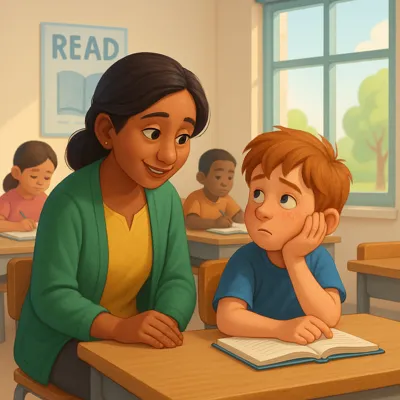
While ADHD presents challenges, it is also associated with several unique strengths that can help children thrive in various environments. Understanding and leveraging these strengths is key to unlocking the potential of children with ADHD.
Creativity and Innovation
Children with ADHD often display exceptional creativity and originality. Their ability to think outside the box allows them to approach problems from unique perspectives and generate innovative solutions. This strength can lead to success in fields like art, music, writing, and design.
High Energy and Enthusiasm
The high energy levels associated with ADHD can translate into enthusiasm and drive when channelled appropriately. Children with ADHD are often described as passionate and dynamic, which can make them engaging and inspirational leaders. Their energetic nature is especially valuable in active, fast-paced environments.
Hyperfocus in Areas of Interest
Although sustaining attention can be challenging, children with ADHD often demonstrate an extraordinary ability to "hyperfocus" on activities that interest them. This intense concentration allows them to immerse themselves fully in tasks they are passionate about, resulting in exceptional productivity and mastery in specific areas.
Resilience and Problem-Solving
Managing the challenges of ADHD fosters resilience and adaptability. Children with ADHD often develop strong problem-solving skills as they learn to navigate a world that may not always accommodate their needs.
Empathy and Emotional Awareness
Children with ADHD frequently show heightened emotional sensitivity and empathy. This trait enables them to connect deeply with others and demonstrate compassion, making them great friends, family members, and colleagues. When nurtured, these qualities can lead to success in roles that require strong interpersonal skills.
Risk-Taking and Adventure
The impulsivity associated with ADHD can also foster a sense of adventure and willingness to take risks. While this trait requires guidance, it can lead to entrepreneurial success, exploration, and achievement in high-stakes environments.
Breaking the Stigma of ADHD

Stigma, which often stems from a mix of misconceptions, lack of awareness, and cultural attitudes, can be broken by fostering understanding, acceptance, and support for those affected by ADHD.
Increasing Awareness
We can increase awareness of ADHD by sharing accurate information, such as evidence-based resources that explain that it is a neurodevelopmental condition and not a behavioural choice or parenting issue.
Addressing Misconceptions
We can counter common misconceptions about ADHD by explaining the neurological basis of the condition.
We can highlight the creativity, innovation, and resilience often found in children with ADHD, demonstrating that ADHD is about more than challenges. You can challenge further by sharing the success stories of people with ADHD who have leveraged their traits positively.
Foster Open Conversations
We can foster open conversations by encouraging children to talk about their experiences with ADHD. This can be further enhanced to provide self-advocacy where children can speak up about their needs and strengths.
We can create environments where parents and children feel comfortable discussing ADHD without fear or judgment.
ADHD Resources for Parents
ADHD Foundation
- One of the largest ADHD charities in the UK, offering resources, training, and support for individuals with ADHD, parents, and educators.
- https://www.adhdfoundation.org.uk/
ADDISS (The National ADHD Information and Support Service)
- Provides information, training, and support for families, schools, and individuals.
- http://www.addiss.co.uk/
ADHD Action
- Advocates for better ADHD awareness and policy changes in the UK.
- https://www.adhdaction.org/
IPSEA (Independent Provider of Special Education Advice)
- Offers free legal advice for parents of children with special educational needs, including ADHD.
- https://www.ipsea.org.uk/
Books and Guides
- “The ADHD Handbook” by Stuart Passmore
- “Understanding ADHD” by Dr. Christopher Green
- “Smart but Scattered” by Peg Dawson and Richard Guare (for parents managing executive functioning issues).
Conclusion
Understanding ADHD in children requires not only awareness but also empathy, action, and collaboration. By recognising the multifaceted challenges faced by children with ADHD—ranging from educational hurdles to emotional and social impacts—we can better appreciate the importance of timely diagnosis, tailored interventions, and ongoing support.
Parents, educators, and society as a whole play a critical role in dismantling the stigma surrounding ADHD and fostering environments where children can thrive. Through education, advocacy, and celebrating the unique strengths of those with ADHD, we can unlock their potential and empower them to succeed.
Ultimately, ADHD should not be viewed solely as a challenge but as an opportunity to embrace neurodiversity and the valuable perspectives it brings to our world. Together, we can create a future where every child with ADHD feels supported, understood, and equipped to achieve their aspirations.
